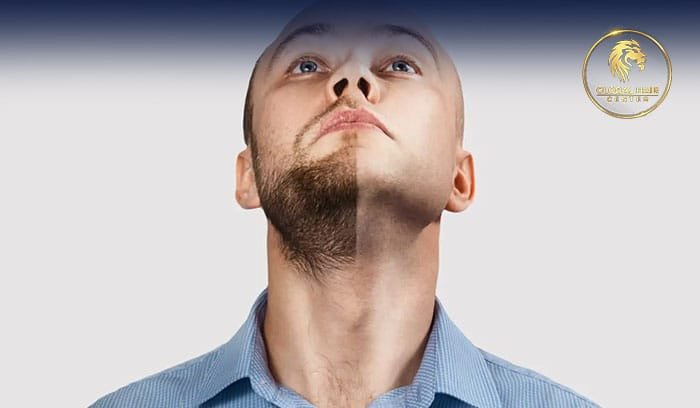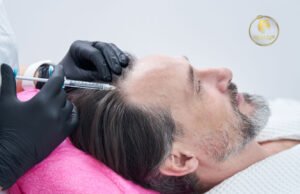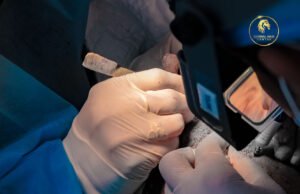The Complete Guide to Beard Hair Transplant: Unlocking Your Path to a Fuller, Thicker Beard

The Complete Guide To Beard Hair Transplant
In the realm of male grooming, a full and well-groomed beard is often regarded as a symbol of masculinity and style. However, not all men are blessed with naturally thick and abundant facial hair. For those struggling with patchy or sparse beards, beard hair transplant offers a solution to achieve the attractive look of a full and robust beard. In this comprehensive guide, we will delve into the details of beard hair transplant, exploring its procedure, benefits, recovery process, and more. Join us on a journey to unlock your path to a fuller, thicker beard and elevate your grooming game to new heights.
Understanding Beard Hair Transplant
Before diving into the details of the procedure, it’s essential to understand what beard hair transplant entails. Beard hair transplant, or facial hair transplantation, is a plastic surgical procedure designed to restore or enhance facial hair density and coverage. It involves harvesting hair follicles from a donor site, typically the back of the scalp, and transplanting them into the beard area. By redistributing healthy hair follicles to areas with sparse or patchy growth, beard hair transplant can create a fuller, more aesthetically pleasing beard.
Who is a Candidate for a Beard Hair Transplant?
While beard hair transplant can be a transformative solution for many men, only some are suitable candidates for the procedure. Ideal candidates for beard hair transplant include individuals who have:
- Sparse or patchy beard growth.
- Scarring or bald patches in the beard area.
- A desire for a more defined or symmetrical beard shape.
- Realistic expectations about the results of the procedure.
Before undergoing a beard hair transplant, it’s essential to consult with a qualified and experienced hair restoration doctor to determine candidacy and discuss treatment goals.
The Procedure
Beard hair transplant is typically performed as an outpatient procedure under local anesthesia which is mainly the same for most hair transplant procedures such as eyebrow hair transplants and female hair transplants. The process involves several key steps, including:
- Consultation and Planning
During the initial consultation, the doctor will assess the patient’s facial anatomy, beard growth patterns, and desired outcomes. A customized treatment plan will be developed based on these factors. - Hair Harvesting
Hair follicles are harvested from the donor site, usually, the back of the scalp, using either follicular unit extraction (FUE) or strip harvesting techniques. FUE involves extracting individual follicular units using a small punch tool, while strip harvesting involves removing a strip of tissue containing hair follicles from the donor area. - Graft Preparation
The harvested follicles are carefully dissected and prepared for transplantation. The doctor selects follicular units of the appropriate size and quality to achieve natural-looking results. - Transplantation
Using specialized instruments, the surgeon implants the prepared follicular units into the recipient sites in the beard area. The placement of grafts is meticulously planned to ensure proper distribution and density. - Post-Procedure Care
After the procedure, patients are provided with instructions for post-operative care, including wound care, activity restrictions, and medication management. Follow-up appointments may be scheduled to monitor healing and assess progress.
Benefits of Beard Hair Transplant
Beard hair transplant offers numerous benefits for men seeking to enhance their facial appearance and confidence, such as:
- Natural-Looking Results
When performed by a skilled doctor, a beard hair transplant can yield natural-looking results that seamlessly integrate with existing facial hair. - Customized Treatment
Each beard hair transplant procedure is tailored to the individual patient’s needs and goals, ensuring personalized and aesthetically pleasing outcomes. - Permanent Solution
The transplanted hair follicles are genetically resistant to hair loss, making beard hair transplant a long-lasting solution for achieving a fuller, thicker beard. - Minimal Downtime
While some initial redness and swelling may occur, most patients can resume their normal activities within a few days to a week after the procedure. - Improved Confidence
A fuller, thicker beard can enhance facial symmetry and proportions, leading to increased self-esteem and confidence in social and professional settings.
Recovery Process
Following a beard hair transplant, patients can expect a gradual recovery process, we’ll explain each step of the recovery phase.
Immediate Post-Procedure Period
Patients may experience some discomfort, swelling, and minor bleeding in the days following the procedure. Pain medication and cold compresses can help alleviate these symptoms.
First Few Weeks
The transplanted hair follicles may shed within the first few weeks after the procedure, which is a normal part of the hair growth cycle. This shedding is temporary, and new hair growth will gradually emerge in the following months.
Long-Term Healing
Over time, the transplanted hair follicles will continue to grow and mature, resulting in fuller, thicker beard growth. Patients can expect to see final results within six to twelve months after the procedure.
Risks and Considerations
While beard hair transplant is generally considered safe and effective, like any surgical procedure, it carries certain risks and considerations, these might include:
- Scarring: While modern techniques aim to minimize scarring, some degree of scarring may occur at the donor and recipient sites. Proper wound care and adherence to post-operative instructions can help minimize the risk of visible scarring.
- Infection: As with any surgical procedure, there is a risk of infection at the surgical sites. Patients should follow all post-operative care instructions to reduce the risk of infection and promote optimal healing.
- Uneven Growth: In some cases, the transplanted hair follicles may not grow uniformly, resulting in uneven or patchy beard growth. Revision procedures may be necessary to address these issues.
Maintaining Your Beard After Transplant
Once the transplanted hair follicles have fully grown and matured, maintaining your beard’s appearance becomes essential, doctors usually advise maintaining:
- Regular Grooming: Trim and shape your beard regularly to maintain your desired style and length.
- Moisturize and Condition: Keep your beard and skin hydrated by using beard oil or conditioner to prevent dryness and irritation.
- Protection from Sun Exposure: Shield your beard from harmful UV rays by applying sunscreen or wearing protective clothing when outdoors.
- Healthy Lifestyle: Maintain a healthy diet and lifestyle to support optimal hair growth and overall well-being.
Conclusion
In conclusion, beard hair transplant offers a transformative solution for men seeking to achieve a fuller, thicker beard and enhance their facial appearance. By understanding the procedure, benefits, recovery process, and maintenance considerations, individuals can make informed decisions about pursuing a beard hair transplant and unlock their path to a more confident and stylish appearance.
With the guidance of a qualified hair restoration doctor and a commitment to post-operative care, achieving the beard of your dreams is well within reach. Say goodbye to patchy or sparse facial hair and hello to a fuller, more masculine beard with a beard hair transplant.

The Role of PRP Therapy in.
What Is PRP Therapy? Platelet-Rich Plasma (PRP) therapy involves extracting platelets from your blood and injecting them into areas of.
Read More
My Hair Transplant Experience in Dubai
My Hair Transplant Experience in Dubai 2025: Your Guide to the Latest Techniques and Cost The city of Dubai.
Read More
